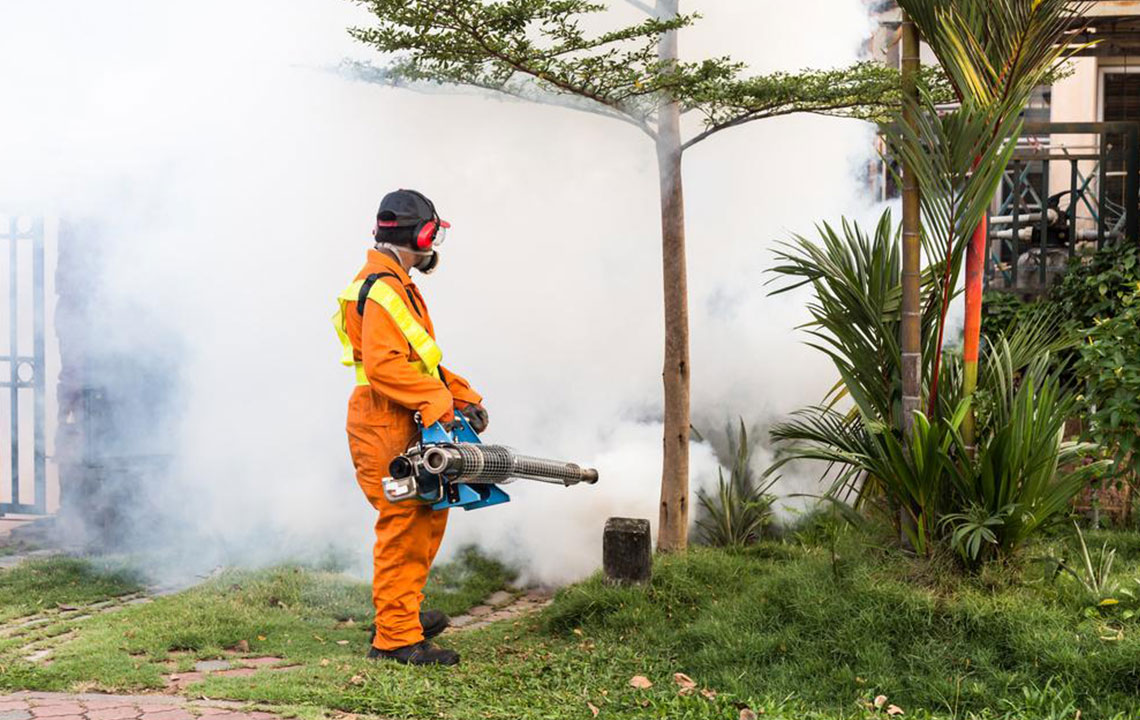Guidelines for Backyard Mosquito Control

Sitting in the backyard and enjoying the weather can be an issue especially in warmer seasons when mosquitoes freely buzz around and pose a potential threat to the health of your family. Although mosquito repellants serve as an interim solution to this problem, a proper backyard mosquito control becomes essential for permanent results. Before finding out ways to get rid of these tiny insects, it essential to know about the breeding cycle as well as common locations where they might reproduce.
Understanding the breeding cycle – A female mosquito has the capacity of laying eggs multiple times after one session of mating with the male mosquito. The surface of the water body is where t he mosquito lays eggs, and these do not hatch until the water level rises due to rain, etc. While mosquitoes grow in a typical larvae-pupae-adult cycle, the time duration taken by each stage will depend on the species present in the backyard. Adult mosquitoes are capable of biting in the winter season as well.
Possible locations – The eggs are laid in damp areas such as water and marshes where there is sufficient amount of moisture. In the backyard, the hotspots include areas such as gutters, pots, tires, bird baths, buckets and the like. It is noteworthy that mosquitoes can fly up to forty miles from the place of their birth. Reducing breeding areas can at least prevent them from mating and producing more mosquitoes in the house.
The size of mosquitoes may be small, but their sting can cause life-threatening diseases. There are numerous backyard mosquito control measures, and a combination can be undertaken for effective elimination. Some mosquitoes are resistant to certain forms of control methods and therefore, hiring the services of a professional pest controller can ensure that the right method is used.
- Reduce areas of stagnant water – Mosquitoes breed the most in stagnant water bodies and reducing the number of these has proven to be beneficial in getting rid of the insects. It is best to avoid empty pots in the backyard so that water does not get collected after a downpour.
- Spray repellents – Mosquito repellants of various brands are commonly found in the market, and they can be sprinkled on possible breeding spots in the backyard. Focus on the areas where your fauna grows since these are moist. Also, the repellant can be sprayed on areas not easily accessible by affixing it to a watering hose.
- Conduct fogging – Fogging is done by the local municipality officials in case the number of people suffering from mosquito-related diseases has reached an all-time high. However, you can also conduct fogging personally in your house using outdoor foggers. This method should be undertaken only in extreme cases and that too with extra precautions.
- Grow plants – There are certain types of plants that some mosquitoes stay away from such as rosemary and marigolds. While these add on to the aesthetic beauty of the garden, they also help in keeping diseases coming from mosquitoes away. Although the benefit of this method has not been scientifically proven, it is preferred by homeowners for because of the natural elements involved.
Professional services
The methods mentioned above are temporary, and if you want a more long-lasting benefit, you can opt for external control services. People who are tired of following common backyard mosquito control measures and can afford to shell a great sum of money should hire professional services. Now, these services are provided in two forms to suit varied requirements:
- One time service – Don’t want mosquitoes to dampen the spirit of an event you wish to host at your place? Choose a one-time backyard mosquito control service that will keep the insects away for some weeks.
- Periodic service – This backyard mosquito control service helps get rid of mosquitoes for a complete season. It is regularly conducted for continuous relief and works best if the schedule starts at the beginning of summer.
There are other measures that can be employed such as mosquito traps. These are intelligent tools that attract mosquitoes towards themselves and then suck those using nets or sticky paper. However, don’t invest in methods that are irrelevant such as bug zappers. The type of backyard mosquito control method to be used depends on the requirement of the homeowner, his budget, his safety concerns and most importantly the type of mosquitoes present. The timing of implementing the measure will also vary since different mosquitoes are active at different times during the day and also at different temperatures.
Don’t let mosquitoes spoil your summer and keep them at bay through efficient backyard mosquito control measures. Start with some basic precautionary methods and if these do not serve your purpose, go for a full-fledged control system. Also, remember that many methods take a specific amount of time to show their effectiveness.


